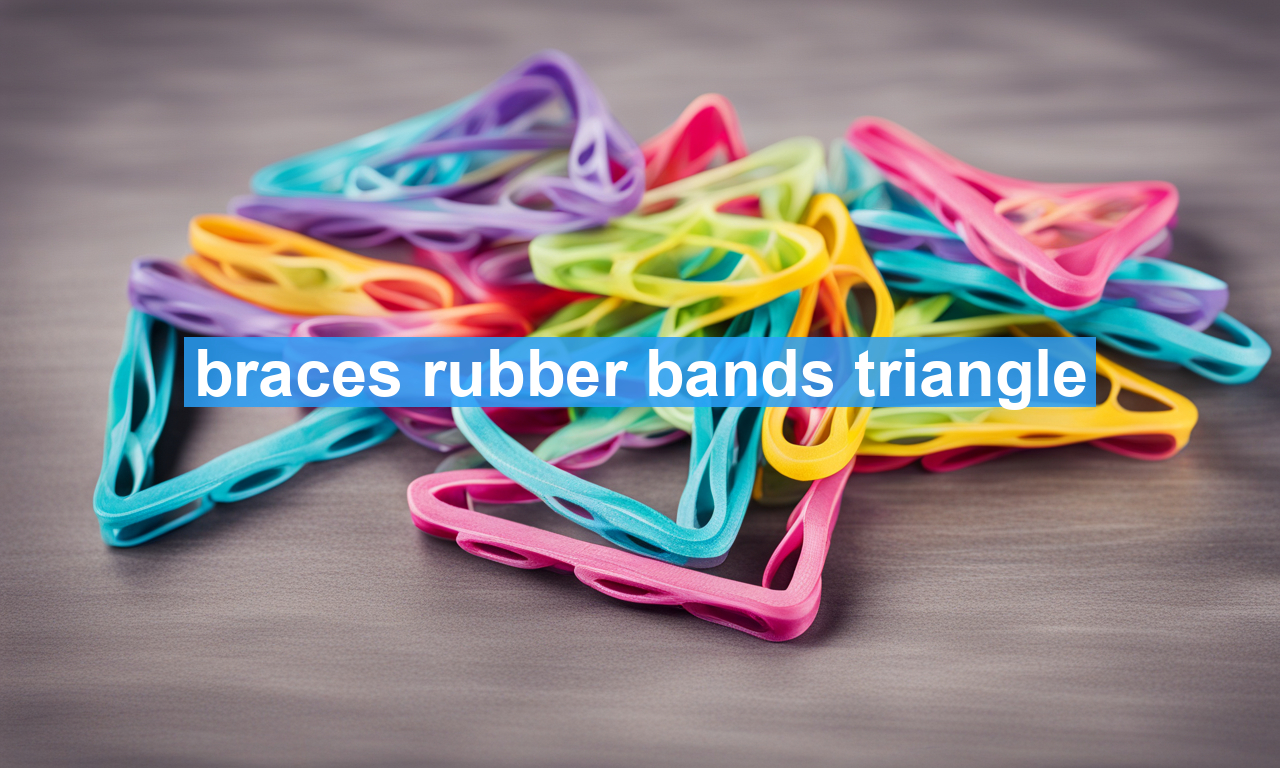Imagine yourself on a journey to a straighter, more confident smile. That’s what braces aim to provide. But sometimes, achieving those perfect teeth requires a little extra help—enter the world of triangle rubber bands. Not just an accessory to your metal mouth gear, these tiny elastic heroes play a pivotal role in refining the alignments of your teeth and jaw. This article breaks down the essential facts about braces rubber bands, especially the triangle configuration, and why they might be necessary for your orthodontic treatment. Whether you’re a first-timer or revisiting braces, understanding these details can play a significant part in your journey to dental perfection.
What Are Braces Rubber Bands?
Rubber bands, also known as elastics, are an intricate part of orthodontic treatment. They provide the necessary force needed to adjust teeth and jaws into their ideal positions. Unlike the bands that cover individual brackets, these elastics are strategically placed to link supporting braces together.
Purpose of Triangle Configurations
Triangle rubber bands aren’t just randomly shaped; they serve a purposeful function. This specific configuration helps correct issues with bite alignment, predominantly addressing underbites, overbites, or crossbites. The triangular arrangement connects brackets from the top set of teeth down to two brackets on the lower teeth (or vice versa), creating triangular tension. This tension is crucial as it guides teeth and jaws into an accurate alignment.
How Do They Work?
The magic of triangle elastics lies in their simplicity and efficiency:
– **Force Application:** By connecting three points, the elastics apply pressure from multiple angles, accelerating the realignment process.
– **Versatility:** Depending on your orthodontic requirements, elastics can be customized in terms of size and strength.
– **Continuous Action:** Unlike wire adjustments that happen during orthodontic appointments, rubber bands work all the time, as long as they’re worn correctly.
For a deep dive into the mechanics of orthodontics, you might want to check out this detailed guide on braces rubber bands by Verywell Health.
Common Questions and Concerns
How Long Do I Need to Wear Triangle Rubber Bands?
The duration varies for every individual, primarily based on the severity of alignment issues and how compliant you are with wearing them. Orthodontists generally recommend wearing them 20-24 hours a day, removing only for meals and oral hygiene activities.
Can’t I Just Skip a Few Days?
While it might be tempting to skip wearing your elastics for comfort, inconsistency can lead to extended treatment timelines, sometimes even reversing the progress. Consistency is key here.
Why Do They Hurt?
It’s natural to feel some discomfort or pain initially as your mouth adjusts to the new forces. Thankfully, this typically subsides within a few days. If the pain persists, consult with your orthodontist to ensure everything is progressing as it should. You can read more about handling discomfort from braces on Healthline.
Tips for Success with Triangle Rubber Bands
The Significance of Compliance
Orthodontic treatment is a commitment, and success largely hinges on your adherence to the orthodontist’s guidance. Remember, those small rubber bands play a gargantuan role in delivering that dream smile. The payoff—self-confidence and improved oral health—makes any temporary discomfort worthwhile.
Conclusion
Triangle rubber bands are a critical component in the intricate world of orthodontics that greatly affect the results of your treatment. Their role in adjusting how teeth line up in the mouth could indeed shorten your treatment time and yield better results. So, embrace this tiny yet profound addition to your braces, and wear them as instructed. To explore different types of orthodontic treatments and how they work, consult the American Association of Orthodontists.
After all, the journey to a perfect smile is a collaborative effort between you and your braces. Keep wearing those elastics, and step closer each day to a smile that’s both healthy and bright!

